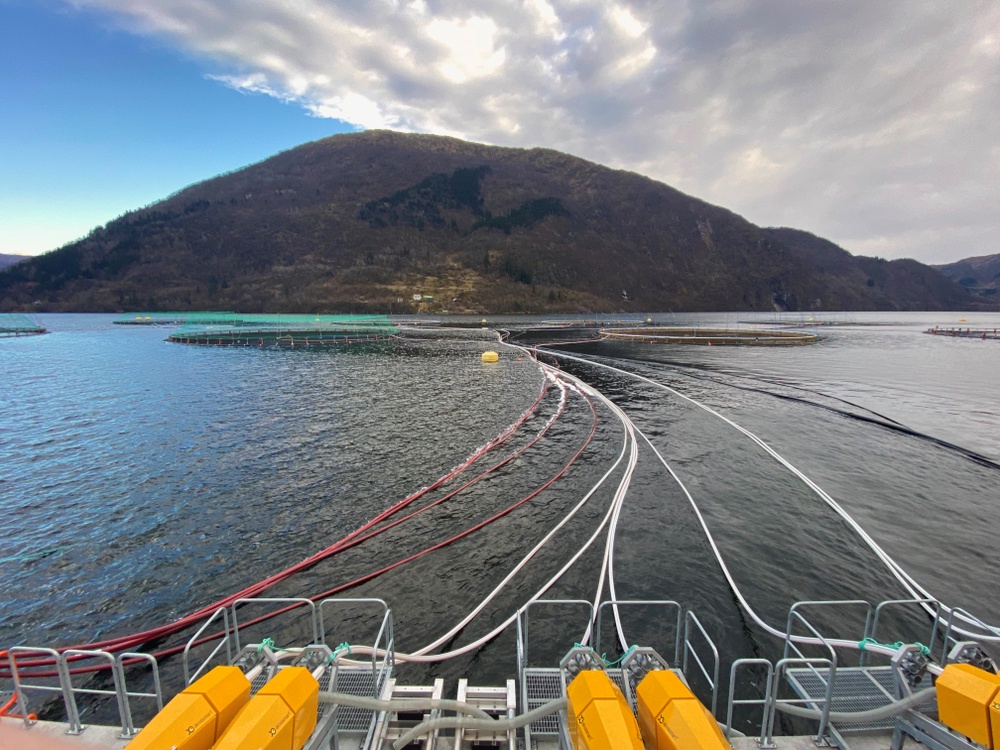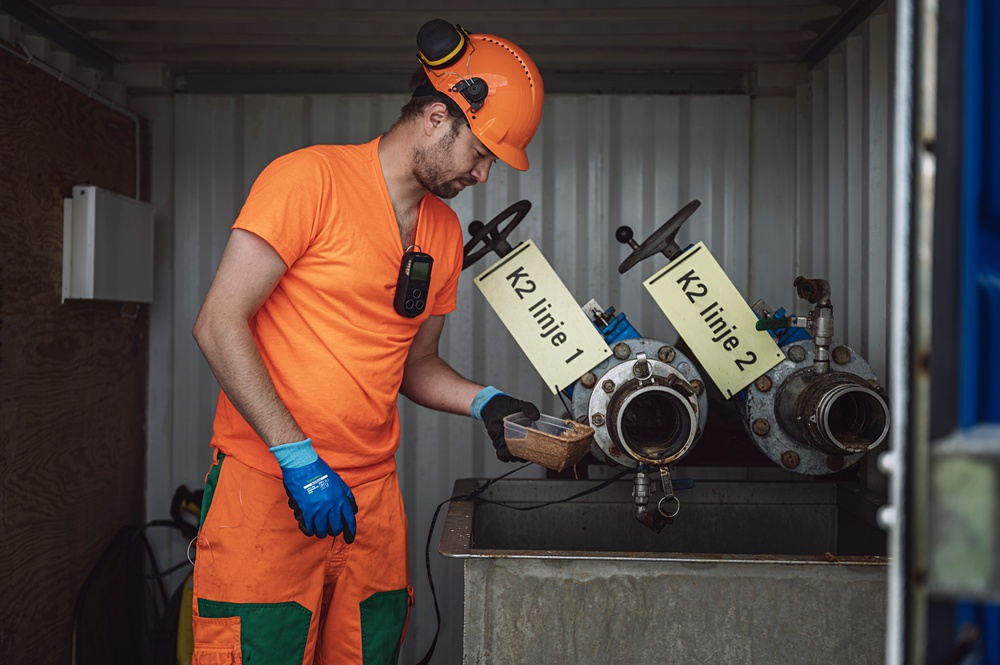Norwegian fish poo can power 600,000 households and supply entire countries with phosphorus
 The PwC report shows that the potential for the sludge from Norway's fish farming is significantly greater than previously estimated.
The PwC report shows that the potential for the sludge from Norway's fish farming is significantly greater than previously estimated.Energy for up to 600,000 households and enough phosphorus fertiliser to cover the agricultural needs of many small nations. These resources can be extracted from sludge washed into the sea from Norwegian salmon farms every year, according to a new report from international consultants PwC commissioned by environmental company Ragn-Sells and partners. New technology enables fish farms all over the world to collect the sludge and put it to use.
– Circular solutions for fish-farm waste mean lower climate impact, less pressure on the marine environment in the fjords and give the ability to double or triple the fish production, while making Europe less dependent on importing energy and fertiliser. This way we help mitigate both the climate crisis and the global food crisis, says Vidar Svenning Olsen, CEO of Ragn-Sells Norway.
The PwC report shows that the potential for the sludge from Norway's fish farming is significantly greater than previously estimated.
- Using new technology to collect the sludge, it can be used to produce biogas containing up to 300 million cubic meters of methane each year from Norwegian sludge alone. The energy value is approximately 3 TWh, equivalent to the electricity use of 600,000 households.
- After this process, the phosphorus-rich sludge is incinerated, and most of the phosphorus extracted from the ashes. The PwC report shows that as much as 16,000 tonnes of phosphorus are flushed from Norway’s fish farms into the sea every year, and that 11,000 tonnes can be recovered using the new technology. This is significantly more than previous estimates, and enough phosphorus to single-handedly meet the agricultural needs of nations like the Netherlands, Sweden or Austria, replacing imports of fossil phosphorus from outside Europe.
– If we are serious about building a sustainable society, we have to start using the raw materials we already have, over and over again. This is especially true for resources that are increasingly difficult to source, such as phosphorus, which is crucial to agriculture as well as livestock farming and aquaculture, says Pär Larshans, Director of Sustainability at Ragn-Sells Group.
In today’s fish farming the sludge, formed from fish faeces and feed residue, sinks through the net pens and washes out into the surrounding ocean. The new technology from the Havbruk collaboration is designed to stop it from reaching the marine environment along the coastline and put it to use instead.
In the Havbruk project, in which Ragn-Sells participates, the sludge is collected by a cap at the bottom of the netting instead of washing through it. The sludge is transported to shore and used to produce energy-rich biogas by anaerobic digestion, a process commonly used for biological waste from businesses and households. After incineration, more than 90 percent of the phosphorus in the sludge ashes can then be extracted using technology developed by Ragn-Sells’ innovation company EasyMining.
The first such circular system will be installed at Eide Fjordbruk’s aquaculture site in Hardangerfjorden, Norway.
– The amount of phosphorus released into the ocean from fish farms in Norway alone would go a long way towards supplying farmers with phosphorus fertiliser in a more sustainable way. We look forward to equipping fish farms all over the world with our circular system, putting an end to this harmful waste of resources, says Mr. Svenning Olsen.
The EU is almost completely dependent on imports for its phosphorus, primarily from Russia and Morocco. Since the Russian invasion of Ukraine, the price of phosphorus fertiliser has increased significantly, leading many countries to start investigating the possibility of domestic production.
There is, however, still one obstacle that prevents fully closed loops for the phosphorus. Current EU legislation, which also applies to EES countries like Norway, bans the use of phosphorus in animal feed when its origin is classified as a waste. This has led Ragn-Sells to primarily look to markets outside of the EU, such as the United States and Canada, instead of putting the phosphorus back on the Norwegian market to be used in fish feed over and over again.
– The EU has made clear its ambitions to transition into a circular economy. For that to happen, this outdated legislation must be revised so that domestic recycled nutrients can start to replace fossil phosphorus from outside the bloc. Quality, not origin, needs to be the sole deciding factor for marketing conditions, says Mr. Larshans.
Collecting the sludge and re-using it also enables increased fish production in existing fish farms. To control local environmental pressure, facilities operate under a cap specifying the maximum amount of fish they can hold at any given time. With two-thirds of the sludge discharge removed, more fish can be produced with less strain on the surrounding coastal environment. The PwC report estimates that an average fish farm adopting the sludge technology can increase production by close to 600 tonnes of salmon per year, corresponding to over NOK 20 million (approximately 1,8 million euros) in profit.
For further information, please contact:
Pär Larshans, Director of Sustainability, +46 70 927 29 63, par.larshans@ragnsells.com
Emma Ranerfors, Press Officer, +46 10 723 24 16, press@ragnsells.com
Fact: The PwC report
- Norwegian fish farms can potentially collect 334,000 tons of sludge annually, given that the Havbruk system captures approximately 70 percent of the total sludge produced. By 2030, the quantity is estimated at 459,000 tonnes, and in 2050 at 1,018,000 tonnes, according to the consulting company PwC.
- Biogas produced from this sludge is estimated to contain between 112 and 309 million cubic meters of methane. By 2050, this is shown to increase to 350–950 million cubic meters.
- An estimated 11,000 tonnes of the fertiliser nutrient phosphorus can be extracted in the process. In 2030, 15,100 tonnes can be extracted, and in 2050 as much as 33,500 tonnes.
- The report has been produced by PwC on behalf of Vestland County, Norway, and the business network ARAL, where environmental company Ragn-Sells is one of the members. It is currently available in Norwegian only.
Fact: Havbruk
- ARAL is a business network consisting of Ragn-Sells, FRAMO Aquaculture, AquaPro and AMOF Fjell Process Technology.
- The first circular aquaculture system in the world will be installed at Eide Fjordbruk’s aquaculture site in Hardangerfjorden.
- Environmental permits set limits for the amount of live fish a site can hold, in order to protect the local environment. Since larger fish populations have meant more discharge, this has effectively put a stop to expansion.
- The initiative is based on a Nordic cooperation. A lot of the sludge processing takes place in Denmark, in the forefront of bioenergy. The recycling of phosphorus is planned to take place in Sweden, where Ragn-Sells awaits environmental permits for its first such facility in the Nordic region, placed in Helsingborg just across the water within eyeshot from Denmark.
- Ongoing work also aims to capture nitrogen, another valuable fertiliser component.
- In 2022, the export value of Norwegian farmed fish was more than NOK 100 billion (about 10 billion euros).
About Ragn-Sells Group
The environmental company Ragn-Sells converts waste into raw materials that can be used over and over again. Ragn-Sells drives the transition to a circular economy through solutions that reduce its own and other actors' environmental and climate impact. Ragn-Sells wants to be living proof that caring for the earth and business go hand in hand. Ragn-Sells is a family owned corporate group founded in 1881. The company operates in five countries and employs 2,500 persons. In 2021, Ragn-Sells’ turnover was SEK 7.6 billion. www.ragnsells.com
